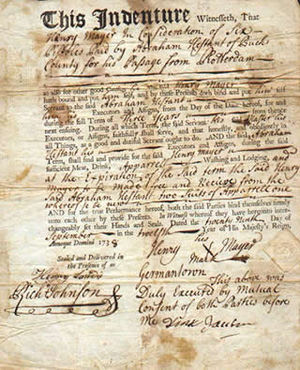
Throughout the 1600s, English courts had relied on the colonies to alleviate the overwhelming criminal population. Jails were filled to capacity as crime rates burgeoned. Because the criminal justice system was so overwhelmed, convicts were often offered a choice between death or exile. While many obviously chose emigration over death, the colonies quickly became unhappy with the arrangement. By 1697, many colonial ports simply refused entry to convict ships.
To compound the problem, the justice system was wildly unregulated to the extent that criminals were often expected to arrange and pay for their own transportation. No one kept track of where they went or how they got there; so many convicts simply hopped a boat to Ireland and came back as soon as the coast was clear.
Despite the problems, Parliament still saw the colonies as a viable solution to Britain’s overwhelmed justice system. To that effect, they drafted and passed the Transportation Act of 1718. This act offered a systematic, standardized process by which criminals could be sentenced and shipped to America and the West Indies.
Under this new legislation, merchant companies were paid a fixed sum to ship boatloads of convicts to the New World colonies. Upon arrival in the New World, merchants and ship captains were free to sell off the convicts as indentured servants.
While the Transportation Act standardized the processing and exile of convicts, there was little regulation once ships set sail. Many captains treated the convicts brutally, keeping them chained below decks and subjecting them to horrible abuses. It was fairly common for a cargo of convicts to mutiny and try to kill the captain and crew.
Depending on the severity of their crimes, convicts were sentenced to seven or fourteen years of indentured labour in the colonies. A few richer convicts were able to simply buy their freedom upon arrival; however, most convicts were penniless, unskilled and uneducated. One boatload of felons was surveyed and out of ninety-eight convicts, forty-eight had no marketable skill, and the rest were either too young to have learned a trade or too old to work.
These unskilled felons were forced to serve the duration of their sentence under whoever paid their purchase price. Most were put to work by small plantation owners; however, others were bought by shipbuilders, manufacturers and tradesmen.
Once a convict had served his sentence, he was set free to start a new life for himself. Some of the ex-convicts established themselves throughout the colonies and became productive in society. Many, however, went right back to criminal activities. In the West Indies in particular, a released convict had very little recourse for survival, as by law he could never have land of his own.
The Transportation Act resulted in more than 52,000 convicts being forcibly transported to America and the West Indies. About 80 percent were sent to Maryland and Virginia, while the rest were scattered throughout other New World colonies. The flow of convict labourers continued unabated for decades, and only stopped with the advent of the American Revolution in 1776.
Related Articles
